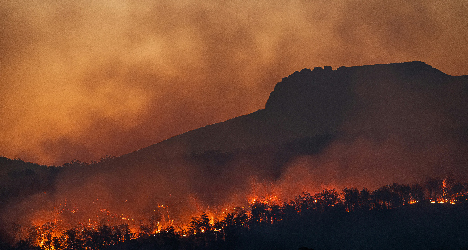Your colleagues in the newsCheck out the top-reaching stories of academic impact in traditional media. Metrics draw from English-language print, broadcast and online global media outlets. | Top stories (April 10-16) |
-
Several faculty, including Phillip Braun, Ian Hurd and Scott Baker, discuss the effects of Donald Trump’s proposed tariffs. They were cited in 177 stories for a reach of 14.2 million. Top outlets include National Public Radio, MarketWatch and Newsweek.
-
John Rogers and Igor Efimov developed the world’s smallest, bioresorbable pacemaker. Rogers was cited in 42 stories for a reach of 8.4 million. Top outlets include CNN.
-
Alexandra Solomon discusses the rising trend of “dry dating,” examining how alcohol influences romantic connections. Solomon was cited in 68 stories for a reach of 6.2 million. Top outlets include National Public Radio broadcasts.
*To allow time for data processing and validation, the reporting period for top stories and quantitative media metrics runs Thursday-Wednesday. |  |
| In the Spotlight | Read in-depth coverage of Northwestern work and research. |  From Science News Climate misinformation is harder to detect as chatbots make false claims sound credible, prompting experts to develop specialized tools to combat it. School of Communication’s Erik Nisbet fine-tuned a custom AI tool specifically focused on climate-skeptic data and found it classified misinformation more accurately than general models. |  From Health.com Health.com explores how people with Crohn’s disease can overcome social challenges and maintain meaningful relationships with expert strategies and support from friends. Feinberg’s Bethany Doerfler says people with Crohn’s often feel anxious about finding safe foods at social events and worry about burdening others with special requests — though most hosts are more than willing to accommodate. |  From WBEZ Chicago robberies have dropped to their lowest levels in decades, with the first three months of 2025 recording the fewest robberies of any quarter in decades, according to a WBEZ analysis of city data. Weinberg professor emeritus Wesley G. Skogan attributes the robbery decline to post-pandemic normalization, including reopened schools, expanded violence-interruption programs, restored youth services and increased police activity. |
| NU Voices | Read perspectives from Northwestern faculty in national media. |  From Forbes, Harry Kraemer “Today’s volatile environment can be expressed in simple formula: Change + Uncertainty = Chaos. The more uncertain things become, the more I strive to keep myself in balance. I pay close attention to what is happening in the short term and ensure that I’m listening to and reading analyses and opinions on both sides of the issues (especially viewpoints that differ from mine),” Kellogg’s Harry Kraemer writes in Forbes. |  From Steven Lubet, The Hill “Hegseth was not the first Republican figure to demand a library purge. That was the disgraced Roy Cohn, Sen. Joe McCarthy’s henchman and President Trump’s early mentor. Hegseth was, however, the first to insist that future military officers could be harmed by exposure to the wrong books. In fact, the most famous five-star general in U.S. history once took a decidedly contrary view,” Northwestern Law’s Steven Lubet writes in The Hill. |
| About | This weekly newsletter serves as a resource for faculty and communications staff, sharing news opportunities and highlighting faculty and University successes in traditional media. It also provides communications tools such as media training resources and announcements about upcoming sessions.
By providing these resources, we hope to help faculty show their expertise to a national and international audience as well as recognize those who are making an impact.
We welcome your feedback on this and all of our communications tools. You can reach us any time at media@northwestern.edu.
Subscribe to Northwestern in the Media. |
|
|





